עוד בפרק זה:
נובמבר 2023
הספרייה מציעה לקוראיה מידי חודש רשימת ספרים וכתבי-עת חדשים שנוספו לאוספיה כל רשומה מכילה:
מס' מיון, מחבר, כותר, מוציא לאור, שנת הוצאה , נושאים, תוכן עיניינים ו\או תקציר.
כדי לראות מצב ההשאלות יש ללחוץ על כותר.
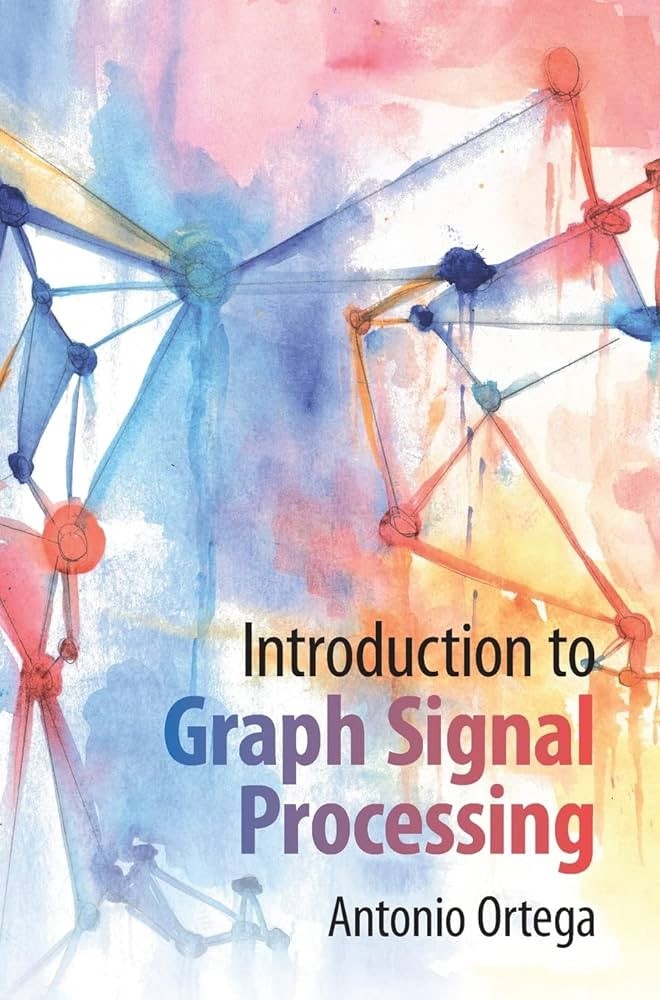 |
ספר אלקטרוני
Ortega, Antonio
Introduction to graph signal processing
Cambridge, United Kingdom ; New York, NY : Cambridge University Press, 2022 נושאים
Signal processing תיאור/תקציר An intuitive and accessible text explaining the fundamentals and applications of graph signal processing. Requiring only an elementary understanding of linear algebra, it covers both basic and advanced topics, including node domain processing, graph signal frequency, sampling, and graph signal representations, as well as how to choose a graph. Understand the basic insights behind key concepts and learn how graphs can be associated to a range of specific applications across physical, biological and social networks, distributed sensor networks, image and video processing, and machine learning. With numerous exercises and Matlab examples to help put knowledge into practice, and a solutions manual available online for instructors, this unique text is essential reading for graduate and senior undergraduate students taking courses on graph signal processing, signal processing, information processing, and data analysis, as well as researchers and industry professionals.
|
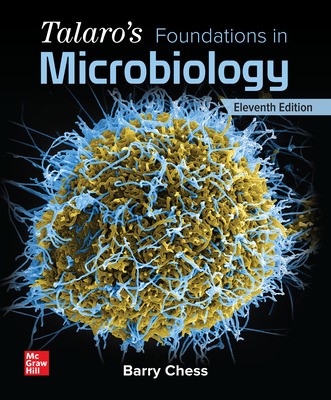 |
ספר אלקטרוני
Chess, Barry Talaro's foundations in microbiology / 11th ed. New York : McGraw Hill Education, 2021 תוכן עיניינים 1.The Main Themes of Microbiology 2. The Chemistry of Biology3. Tools of the Laboratory: Methods of Studying Microorganisms4. A Survey of Prokaryotic Cells and Microorganisms5. A Survey of Eukaryotic Cells and Microorganisms6. An Introduction to Viruses, Viroids, and Prions7. Microbial Nutrition, Ecology, and Growth8. An Introduction to Microbial Metabolism: The Chemical Crossroads of Life9. An Introduction to Microbial Genetics10. Genetic Engineering: A Revolution in Molecular Biology11. Physical and Chemical Agents for Microbial Control12. Drugs, Microbes, Host--The Elements of Chemotherapy13. Microbe-Human Interactions: Infection, Disease, and Epidemiology14. An Introduction to Host Defenses and Innate Immunities15. Adaptive, Specific Immunity and Immunization16. Disorders in Immunity17. Procedures for Identifying Pathogens and Diagnosing Infections18. The Gram-Positive and Gram-Negative Cocci of Medical Importance19. The Gram-Positive Bacilli of Medical Importance20. The Gram-Negative Bacilli of Medical Importance21. Miscellaneous Bacterial Agents of Disease22. The Fungi of Medical Importance23. The Parasites of Medical Importance24. Introduction to Viruses That Infect Humans: The DNA Viruses25. The RNA Viruses That Infect Humans26. Environmental Microbiology27. Applied and Industrial Microbiology
|
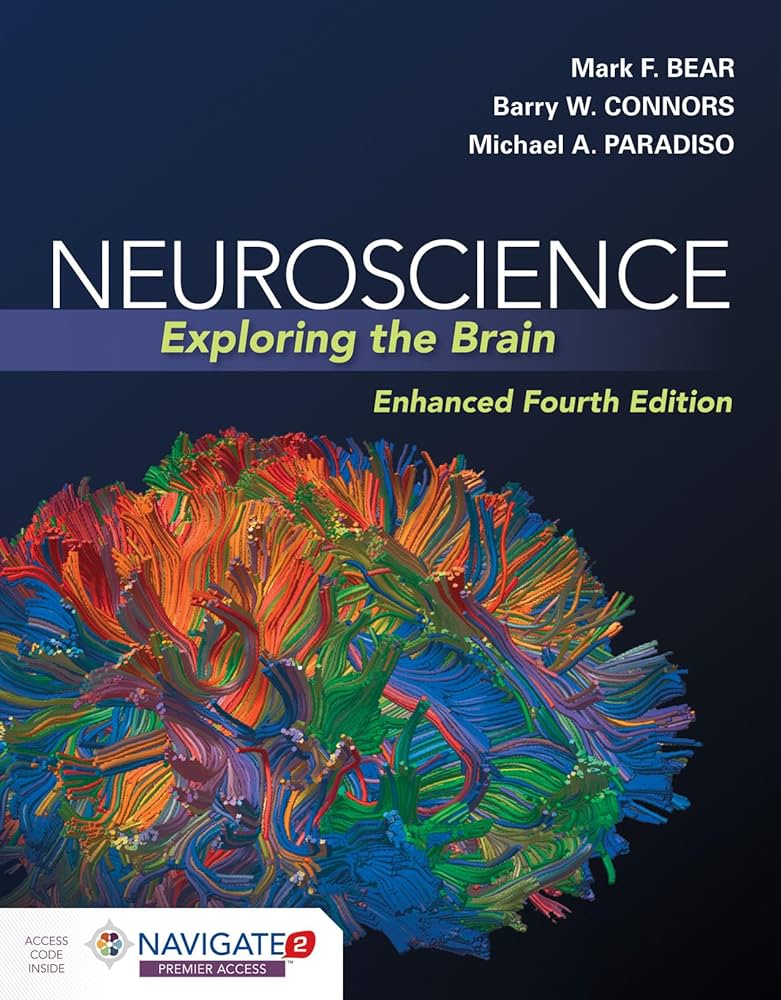 |
Bear, Mark F., Connors, Barry W., Neuroscience : exploring the brain / Enhanced fourth edition. Burlington, MA : Jones & Bartlett Learning, 2020 נושאים תוכן עיניינים Part 1 Foundations Chapter 1 Neuroscience: Past, Present, and Future Chapter 2 Neurons and Glia Chapter 3 The Neuronal Membrane at Rest Chapter 4 The Action Potential Chapter 5 Synaptic Transmission Chapter 6 Neurotransmitter Systems Chapter 7 The Structure of the Nervous System Appendix An Illustrated Guide to Human Neuroanatomy Part 2 Sensory and Motor Systems Chapter 8 The Chemical Senses Chapter 9 The Eye Chapter 10 The Central Visual System Chapter 11 The Auditory and Vestibular Systems Chapter 12 The Somatic Sensory System Chapter 13 Spinal Control of Movement Chapter 14 Brain Control of Movement Part 3 The Brain and Behavior Chapter 15 Chemical Control of the Brain and Behavior Chapter 16 Motivation Chapter 17 Sex and the Brain Chapter 18 Brain Mechanisms of Emotion Chapter 19 Brain Rhythms and Sleep Chapter 20 Language Chapter 21 The Resting Brain, Attention, and Consciousness Chapter 22 Mental Illness Part 4 The Changing Brain Chapter 23 Wiring the Brain Chapter 24 Memory Systems Chapter 25 Molecular Mechanisms of Learning and Memory
|
 |
612 WAT Burlington, Massachusetts : Jones & Bartlett Learning, 2015 נושאים נושאי MESH תוכן עניינים 1. Cellular physiology -- Compartmentalization : cells are separated from extracellular fluid by a plasma membrane -- Compartmentalization : extracellular fluid is separated from vascular ECG -- Osmosis -- Some transport requires energy -- Communication : how do cells coordinate activities or change function? -- How does cellular communication result from an action potential? -- Cellular receptors transduce a signal across the cell membrane without permitting molecules to cross the membrane -- Hormonal signals are slower and sustained -- Neurotransmitters -- Steroid hormones -- Making proteins to do the work : how are proteins synthesized? -- Energy production : fueling cellular work -- Glycolysis -- Mitochondria : organelles that produce most of our ATP -- Fatty acids are a source of acetyl-CoA -- Muscle contraction : a symphony of cellular communication -- The action potential -- Excitation-contraction coupling : linking electrical signal to mechanical work -- How does skeletal muscle contract? -- Myosin binding, cross bridge cycling, and ATP hydrolysis -- 'Clinical study : Type 2 diabetes mellitus -- 2. Autonomic nervous system -- Background on the nervous system -- Rest and digest : the parasympathetic nervous system -- Fight or flight : the sympathetic nervous system -- How can norepinephrine cause vasoconstriction in some vessels and vasodilation in others? -- Dual innervation of tissues by parasympathetic and sympathetic branches -- Smooth muscle contraction and its control -- Single innervation of blood vessels : how one system does it all -- Does the brain play a part in the autonomic nervous system? -- Body temperature regulation -- The sensors : how do we know if its hot or cold? -- What are the sources of body heat? -- How do we cool our blood temperature? -- How do we stay warm? -- Clinical case study : heart failure -- 3. Endocrine physiology -- How do we maintain ATP production when we eat periodically? -- Glucagon regulates release of glucose from glycogen stores in the liver -- Insulin regulates glucose uptake and storage by skeletal muscle, adipose tissue, and liver -- Cortisol release from the adrenal cortex is signaled from the hypothalamus and the anterior pituitary -- How does stress affect cortisol release and functions? -- Growth hormone also promotes glucose availability -- How is hormone release linked to energy balance -- What is the signal for satiety? -- Is there a modulator of ATP production or metabolic rate? -- How is thyroid hormone made -- If there is not water, how do we regulate our fluid balance? -- Antidiuretic hormone (ADH) acts directly to retain water -- Aldosterone regulates water balance indirectly -- The formation of angiotensin II requires enzymes in several tissues -- What happens if we drink too much water? -- How is blood calcium regulated and how is lost calcium regained? -- Clinical case study : type 2 diabetes mellitus -- Clinical case study : heart failure -- 4. Immune system physiology -- Physical barriers : our first line of defense -- The healing process : tissue repair and immune response -- white blood cells -- How does blood clot and stop the flow of blood? -- Leukocytes and local inflammation -- Complement system of plasma proteins -- How does local inflammation progress to systemic inflammation? -- How is fever generated and maintained? -- Lymphocytes are the cells of the adaptive immune system -- Anatomy of the lymphatic system -- T cells engage in cell-mediated immunity -- B lymphocytes produce antibodies -- Clinical case study : type 2 diabetes mellitus and chronic inflammation. 5. Somatic nervous system and special senses -- 6. Digestive system -- What happens in your mouth? -- Transport to the stomach -- Smooth muscle contraction in the digestive tract -- The cephalic phase : preparation for food reaching the stomach -- Gastric phase : what happens when food arrives in the stomach? -- Bile emulsifies fats and facilitates hydrolysis -- Intestinal phase : absorption and motility in the small intestine -- Water and ions are absorbed in the small intestine -- How is food moved through the intestine? -- The large intestine -- Motility in the large intestine and defecation -- How are nutrients distributed? -- 7. Cardiovascular physiology -- Anatomy of the cardiovascular system : the heart -- Cardiac muscle : cellular level of organization -- Anatomy : the vasculature -- Capillary bed -- Lymphatic system -- How does blood return to the heart? -- Blood -- Hemoglobin -- Erythrocyte synthesis -- What causes the heart to beat? -- What is an ECG and what information does it provide? -- Cardiac excitation-contraction coupling -- What makes my heart pound when I run? -- Cardiac cycle -- What is cardiac output and how is it regulated? -- Heart rate -- Stroke volume -- Metabolism, O2 consumption, and cardiac work -- Blood vessels carry blood to tissues -- Blood flow : behavior of fluids -- Arterial blood pressure -- 8. Respiratory physiology -- How do we get air into the lung? -- How do we get air out of the lung during quiet expiration? -- Forced expiration -- How do flow and resistance to flow affect ventilation? -- What happens to air once it is in the lung? How is oxygen delivered to tissues? -- Co2 and hemoglobin -- O2 binding and release -- What causes me to breathe while sleeping? 9. Renal physiology and acid base balance -- Structure of the kidney, the nephron, and associated blood vessels -- How does blood become urine? -- Afferent and efferent arterioles -- Bowman's capsule -- Proximal convoluted tubule -- Loop of Henle -- Distal convoluted tubule and the collecting duct -- Urine formation by filtration -- Secretory actions of the kidney -- Where does urine go after the collecting duct, and what regulates elimination? -- Acid-base balance is primarily regulated by bicarbonate -- Clinical case study : heart failure -- Clinical case study : type 2 diabetes mellitus -- 10. Exercise physiology / Integration of physiology -- Muscles -- Hormones -- Cardiovascular changes during training -- Cardiovascular system -- Hydration and fluid balance -- Regulate body temperature -- Digestive system -- Inflammatory responses -- Heart failure -- Clinical case study : type 2 diabetes mellitus -- 11. Reproduction and fetal development -- Gross anatomy of the male reproductive system -- Gross anatomy of the female reproductive system -- Sexual intercourse and nervous systems -- Hypothalamic-pituitary axis -- Semen -- Female gametes -- Post-ovulatory ovarian cycle -- Fertilization -- Fetal and maternal changes -- Childbirth -- Lactation -- Early development -- Menopause -- Clinical case study : diabetes -- Appendix A. The electrocardiogram (ECG) -- Appendix B. Measuring pulmonary capacities and volumes -- Appendix C. Measuring glomerular filtration rate and clearance.
|
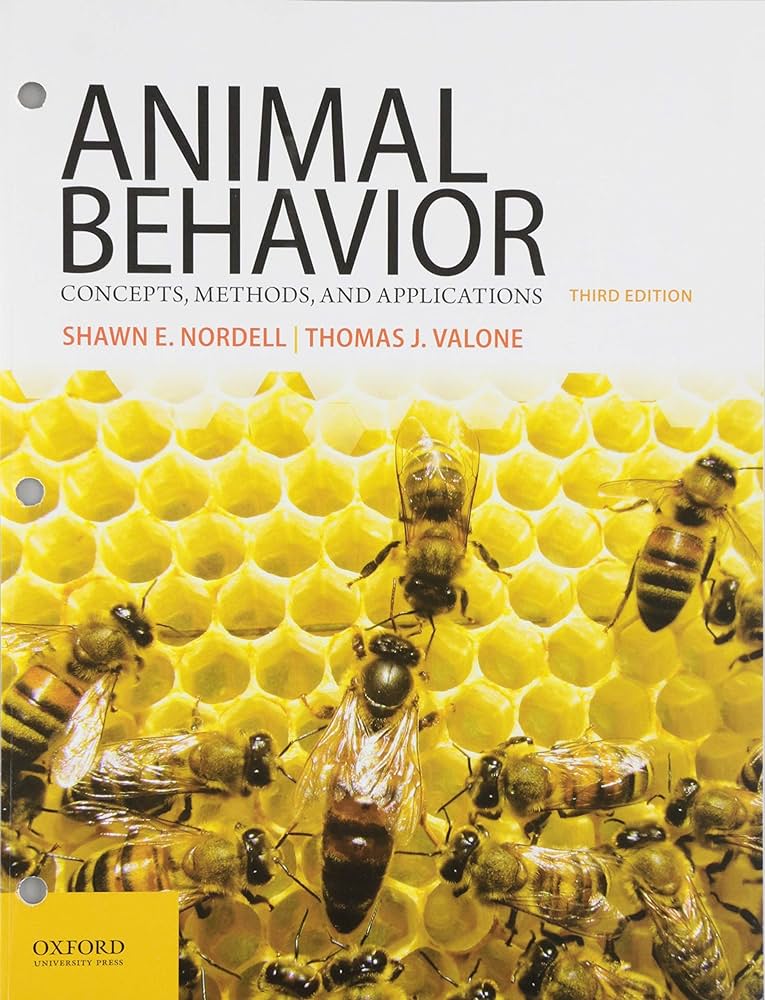 |
591.5 NOR Nordell, Shawn E., Valone, Thomas J. Animal behavior concepts, methods, and applications / International 3rd. ed. New York Oxford University Press, 2021 נושאים תקציר EMPHASIZES CONCEPTS. Animal Behavior: Concepts, Methods, and Applications, Third Edition, uses broad organizing concepts to provide a framework for understanding the science of animal behavior. In an engaging, question-driven style, Shawn E. Nordell and Thomas J. Valone offer readers a clear learning progression for understanding and evaluating empirical research examples. FOCUSES ON METHODOLOGY AND THE PROCESS OF SCIENCE. Featured studies illustrate each concept and emphasize the experimental designs and the hypothesis testing methods scientists use to address research questions. HIGHLIGHTS REAL-WORLD APPLICATIONS. Concepts are related to real life to help students understand the broader significance of animal behavior research, including applications to human behavior and conservation.
|
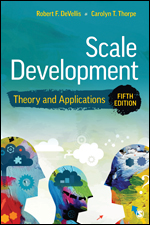 |
303.224 DEV DeVellis, Robert F., Thorpe, Carolyn T. Scale development : theory and applications / 5th ed. Thousand Oaks, California : SAGE Publications, Inc., 2022 נושאים תיאור/תקציר "Scale Development: Theory and Applications, by Robert F. DeVellis and new co-author Carolyn T. Thorpe, demystifies measurement by emphasizing a logical rather than strictly mathematical understanding of concepts. The Fifth Edition includes a new chapter that lays out the key concepts that distinguish indices from scales, contrasts various types of indices, suggests approaches for developing them, reviews validity and reliability issues, and discusses in broad terms some analytic approaches. All chapters have been updated, and the book strikes a balance between including relevant topics and highlighting recent developments in measurement while retaining an accessible, user-friendly approach to the material covered"-- Provided by publisher.
|
 |
321.01 VES State theory and the law : an introduction Cheltenham : Edward Elgar Publishing, 2023 נושאים תיאור/תקציר There has been renewed and growing interest in exploring the significant role played by law in the centralization of power and sovereignty – right from the earliest point. This timely book serves as an introduction into state theory, providing an overview of the conceptual history and the interdisciplinary tradition of the continental European general theory of the state.Chapters present a theory of the state grounded in cultural analysis and show liberal democracy to be the paradigm of today’s western nation-state. The analysis includes the emergence of legal forms and institutions that are linked either to the constitutional state (the securing of civil liberties and fundamental rights), the welfare state (social and welfare law), or the network-state (regulation of complex digital technologies). Thomas Vesting focuses on illustrating the fundamental features of these evolutionary stages – the three layers constituting the modern state – and reveals their cultural and social preconditions.This book will be an ideal read for students, postgraduates, and other academic audiences with interests in state theory, jurisprudence, legal theory, political theory, and legal philosophy.
|
 |
57 CAM Campbell biology : concepts & connections / 10th ed. Harlow : Pearson, 2022 נושאים נושאי MESH תיאור/תקציר This text has undergone an extensive revision to make biology even more approachable with increased use of analogies, real world examples, and more conversational language. תוכן עניינים 1. Biology: Exploring Life -- Unit I. The Life of the Cell : -- 2. The Chemical Basis of Life -- 3. The Molecules of Cells -- 4. A Tour of the Cell -- 5. The Working Cell -- 6. How Cells Harvest Chemical Energy -- 7. Photosynthesis: Using Light to Make Food -- Unit II. Cellular Reproduction and Genetics : -- 8. The Cellular Basis of Reproduction and Inheritance -- 9. Patterns of Inheritance -- 10. Molecular Biology of the Gene -- 11. How Genes Are Controlled -- 12. DNA Technology and Genomics -- Unit III. Concepts of Evolution : -- 13. How Populations Evolve -- 14. The Origin of Species -- 15. Tracing Evolutionary History -- Unit IV. The Evolution of Biological Diversity : -- 16. Microbial Life: Prokaryotes and Protists -- 17. The Evolution of Plant and Fungal Diversity -- 18. The Evolution of Invertebrate Diversity -- 19. The Evolution of Vertebrate Diversity -- Unit V. Animals: Form and Function : -- 20. Unifying Concepts of Animal Structure and Function -- 21. Nutrition and Digestion -- 22. Gas Exchange -- 23. Circulation -- 24. The Immune System -- 25. Control of Body Temperature and Water Balance -- 26. Hormones and the Endocrine System -- 27. Reproduction and Embryonic Development -- 28. Nervous Systems -- 29. The Senses -- 30. How Animals Move -- Unit VI. Plants: Form and Function : -- 31. Plant Structure, Growth, and Reproduction -- 32. Plant Nutrition and Transport -- 33. Control Systems in Plants -- Unit VII. Ecology : -- 34. The Biosphere: An Introduction to Earth's Diverse Environments -- 35. Behavioral Adaptations to the Environment -- 36. Population Ecology -- 37. Communities and Ecosystems -- 38. Conservation Biology -- Appendix 1. Metric Conversion Table -- Appendix 2. The Periodic Table -- Appendix 3. The Amino Acids of Proteins -- Appendix 4. Chapter Review Answers -- Appendix 5. Credits.
|
 |
E96.13 YAR From 5G to 6G : technologies, architecture, AI, and security New Jersey : Wiley-Blackwell, 2023 נושאים Mobile communication systems -- Security measures תיאור/תקציר "The transition from the fifth generation of wireless communication (5G) to the coming sixth generation (6G) promises to be one of the most significant phases in the history of telecommunications. The technological, social, and logistical challenges promise to be significant, and meeting these challenges will determine the future of wireless communication. Experts and professionals across dozens of fields and industries are beginning to reckon seriously with these challenges as the 6G revolution approaches.From 5G to 6G provides an overview of this transition, offering a snapshot of a moment in which 5G is establishing itself and 6G draws ever nearer. It focuses on recent advances in wireless technology that brings 6G closer to reality, as well as the near-term challenges that still have to be met for this transition to succeed. The result is an essential book for anyone wishing to understand the future of wireless telecommunications in an increasingly connected world.From 5G to 6G readers will also find:6G applications to both AI and Machine Learning, technologies which loom ever larger in wireless communicationDiscussion of subjects including smart healthcare, cybersecurity, extended reality, and moreTreatment of the ongoing infrastructural and technological requirements for 6GFrom 5G to 6G is essential for researchers and academics in wireless communication and computer science, as well as for undergraduates in related subjects and professionals in wireless-adjacent fields" -- Provided by publisher
|
- כתבות, חדשות ואירועים


